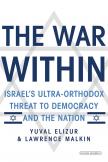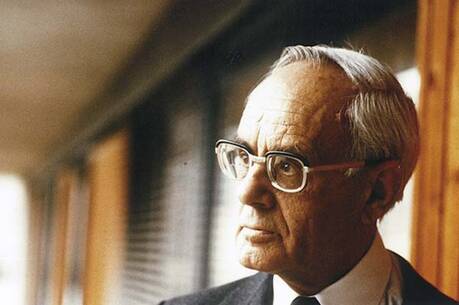When the Messiah Comes
For years, American newspapers have reported on the clashes between Israel and its neighboring countries. Similarly, coverage has extended to the challenging situation facing Jews and Arabs within Israel’s own borders. Only recently have we begun to hear of an equally pressing concern for many Israelis—namely, the rising tensions between Israel’s Haredim and the rest of its citizens. The term “Haredim” refers to a number of ultra-orthodox groups that reject all religious accommodation with modernity and secular society. According to Yuval Elizur and Lawrence Malkin, seasoned journalists, these tensions have created a domestic crisis akin to “war” that menacingly tears at Israel’s fabric and seriously threatens its future. In 2009, Elizur and Malkin exposed this situation in a Hebrew language publication. In The War Within, they have revised and updated their study for English-language readers.
At the core of the issue is the question: Is Israel a state for Jews or a Jewish state? The founder of Zionism, Theodor Herzl, originally envisioned a state for Jews. David Ben-Gurion, Israel’s first prime minister, had a similar outlook, although a year before he declared Israel an independent state (1948), for political concerns, he made an agreement that called for a religious status quo with Agudat Israel, the political party representing Israel’s Haredim. This agreement honored the Sabbath as an official day of rest, observed Jewish dietary laws in the military and government, adopted Orthodox Judaism’s marriage rules and traditions for the State of Israel and guaranteed full autonomy for religious instruction. At the same time, it provided for the government to prescribe a nonreligious curriculum for public schools.
At first such an agreement worked, especially since the number of ultra-Orthodox Haredim was small compared with the majority of Israelis, who were less religiously bound or more secular. Many Jews, both in Israel and throughout the world, viewed positively (and continue to view positively) religiously conservative Jews who maintain traditional garb and religious study, and consistently pray.
Elizur and Malkin argue, however, that serious problems began in 1977, when Menachem Begin’s Likud Party, an alliance of right-wing and liberal parties, defeated the long-entrenched left wing parties and formed a government through an alliance with the ultra-Orthodox political parties. From this point on, the authors find that successive Israeli governments have over the years granted increasing concessions to ultra-Orthodox concerns. These concessions in turn have affected Israeli society as the line between religious and civil law gradually recedes from view. The authors find this particularly troubling with regard to discrimination against women, government regulations governing Sabbath observance and Haredi control of marriage and conversion.
At the core of Elizur and Malkin’s concern is the participation of the Haredim in the life of the State of Israel. Though they live in Israel, many Haredim reject the legitimacy of this Jewish state altogether, believing that this kind of state may come into existence only when the Messiah comes. Until then, the task for Jews is to live a “traditional” Jewish life by studying and praying as they patiently wait for this “transcendent event.” To prepare themselves for such a life, Haredi men attend yeshiva—a Jewish higher educational institute devoted to the study of sacred texts. Never in history have so many Jewish men at the same time attended yeshiva. Currently, somewhere between 100,000 to 120,000 Jewish men study full time in Israel. Even at the height of Haredi Judaism in pre-World War II Europe, there were, at most, 4,000 Jews attending yeshivas.
Demographics, however, are not the authors’ only concern. Elizur and Malkin also lament that even with this vast number of yeshiva students, no new “breakthrough” scholarship has been produced. The authors are equally troubled by the growth and inconsistencies of what is called independent education—the result of an agreement between the ultra-Orthodox parties and the Israeli government to create a new classification of elementary and middle-schools outside the government-sponsored system. The curriculum in many of these schools, though not all, has in the authors’ view devolved into the study of religious texts alone at the expense of state mandated subjects like science, mathematics and history. Thus independent schools have become in essence preparatory schools for yeshivas that produce generations of Haredi Israelis unequipped for the technical demands of the future.
For Elizur and Malkin, all these developments are extremely troubling. The statistics the authors cite (from 2008) do in fact provide reason for concern: 65 percent of Haredi men between the ages of 35 and 55 are unemployed, and 60 percent of Haredi families live below the poverty line. The state, and therefore Israeli taxpayers, subsidize this system. All yeshiva students, for example, receive a modest monthly stipend from the government without any limits on the length of time such subsidies may be received. By contrast, no similar support is so freely awarded to students who attend Israel’s universities. However, subsidies for study are not the only benefits that Haredim receive from the state. Presently, yeshiva students are exempted from serving in the armed forces—a requirement imposed on all Israelis with few exceptions.
Haredim respond to their situation in Israeli society in a variety of ways. Some advocate the imposition of Orthodox norms on all Israeli Jews. Frustrated with breaches, some have resorted to violence like stone-throwing. Other Haredim have followed the “route of pleasantness” by promoting their way of life in a positive manner through educational means. Amid all this, Elizur and Malkin have discovered that some Haredim feel trapped by their secluded life and regimented studies. Yet the option to leave is not always available, and many obstacles exist for those who attempt to integrate themselves into non-Haredi Israeli society.
Elizur and Malkin make their case convincingly. They firmly believe that unless the destructive situation is resolved in a “spirit of tolerance,” the chance for the Israeli state to “crumble” and fall into “fragmentation” is a real possibility. In the worst case scenario, the authors believe a fragmenting situation could lead to a single state with an Arab majority. This scenario might not end positively for the Haredim—or for any Israeli Jews, for that matter.
Yet despite the urgency of their words, Elizur and Malkin do little to allow the reader to hear the case of the other side—the Haredim. Almost all the sources quoted, mainly statements by Israeli academics, favor the authors’ argument. Similarly, the authors almost vilify the ultra-Orthodox—for example, by graphically recounting three separate times the story of Haredi men spitting on a young girl for her failure to follow their religious norms. Though no one need approve of such crass actions, Elizur and Malkin seem to miss the key point of “the war within.” For the Haredim, the “war” is a spiritual battle for the religious soul of the Jewish people, to be won only by following Halacha (God’s law) as they await the Messiah. It is a nearly impossible conflict to resolve, but one that Israelis urgently need to face.
This article also appeared in print, under the headline “When the Messiah Comes,” in the May 20, 2013, issue.








